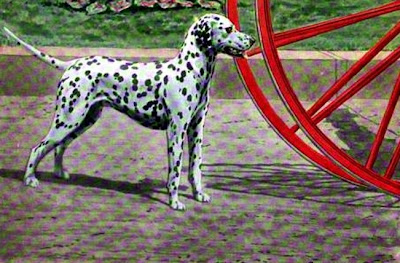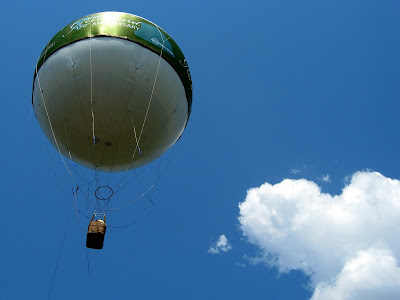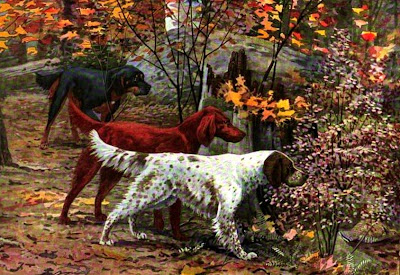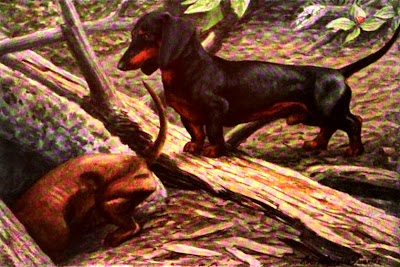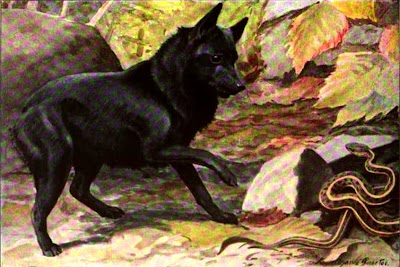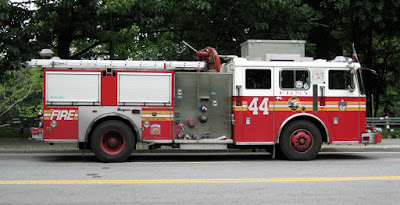 | Those who proclaim the Russian wolfhound, or borzoi, the most wonderful dog in the world have strong grounds for their opinion. |
But the gods always withhold something even from those whom they favor most, and
the borzois we have seen appeared to lack both the keen intelligence and the frank expression characteristic of their British cousins.
We know that the champions of the breed will differ from us in this, but the fact remains that the form of the Russian dog's head leaves little room for brains.
In Russia these hounds are used in wolf-hunting. The wolves are first driven out of
the woods by smaller dogs or by beaters, and when a wolf comes into the open two or three borzois, well matched as to speed and courage, are unleashed and sent after him. They are trained to seize the wolf, one on each side, just behind the ears, and they should do this both at the same moment, so that their antagonist cannot use his formidable teeth on either of them.
They hold their quarry until the huntsman arrives, leaps from his horse, and either dispatches the wolf with a knife or muzzles him and carries him off to be used in training young dogs in a large, railed inclosure made on purpose.
This handsome animal should be of extreme slenderness of head, leg, and waist; narrow
through the shoulders, but very deep in the chest. Pasterns and hocks well let down, and, like the greyhound and whippet, the borzoi should have the back strongly arched or reached to give play to the enormous unbending spring.
The legs are straighter than in the greyhound, especially at the stifle. Color is not a cardinal feature, as in Russia at least the borzoi is really used for wolf-
hunting and the color is unimportant. Here and in England, however, where they are kept solely for their graceful beauty, those in which white predominates, with head and flank markings of lemon, bay, brown, or black, are favorites.
The head should be extremely slender and narrow, the coat deep, silky, and nearly straight, the eyes full and round. Indeed, the eyes of the best dogs look rather flat and scared to one who sees them for the first time. In spite of his slender, rather obsequious, appearance, the borzoi is a serious opponent when in trouble. Woolly hair, bent pasterns, straight back, "cow hocks,'' and a gaily carried tail are all defects to be avoided.
The legs should be strong and straight, of good bone, for speed and endurance. . The feet should not be large, but compact, and with toes well arched and pads deep and elastic. The coach dog should be from 19 to 23 inches high and weigh from 35 to 50 pounds.
From The Book of Dogs: An Intimate Study of Mankind's Best Friend By National Geographic Society (U.S.), Louis Agassiz Fuertes, Ernest Harold Baynes Published 1919. 109 pages Original from Harvard University.
This image (or other media file) is in the public domain because its copyright has expired.
This applies to the United States, where Works published prior to 1978 were copyright protected for a maximum of 75 years.
See Circular 1 "COPYRIGHT BASICS" from the U.S. Copyright Office. Works published before 1923 are now in the public domain In the United States,
This inage is also in the public domain in countries that figure copyright from the date of death of the artist (post mortem auctoris in thi case Louis Agassiz Fuertes (1874 – 1927) and that most commonly runs for a period of 50 to 70 years from that date. If your use will be outside the United States please check your local law.
Tags: Public Domain Clip Art and clip art or public domain and Russian Wolfhound or Borzoi











